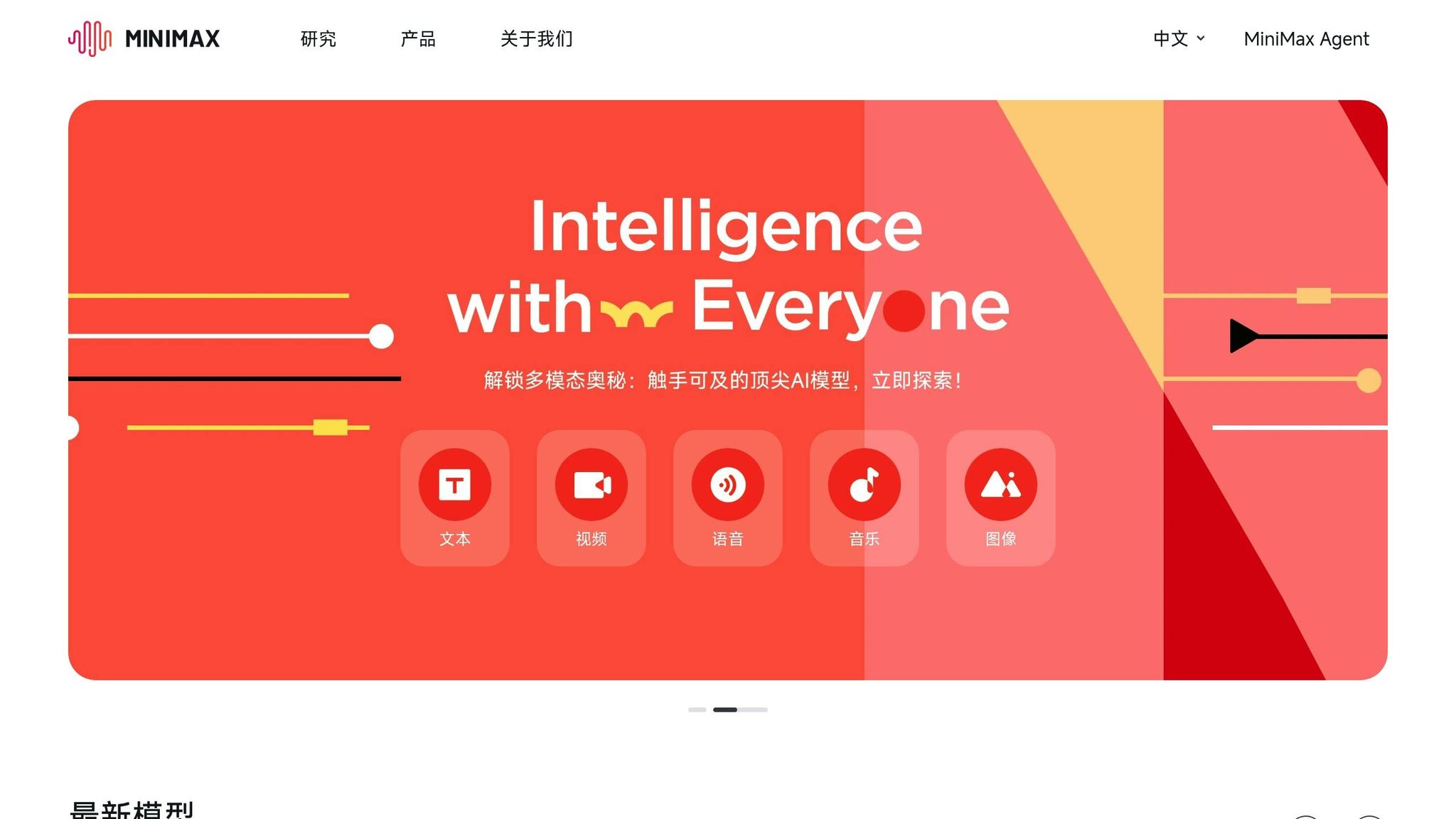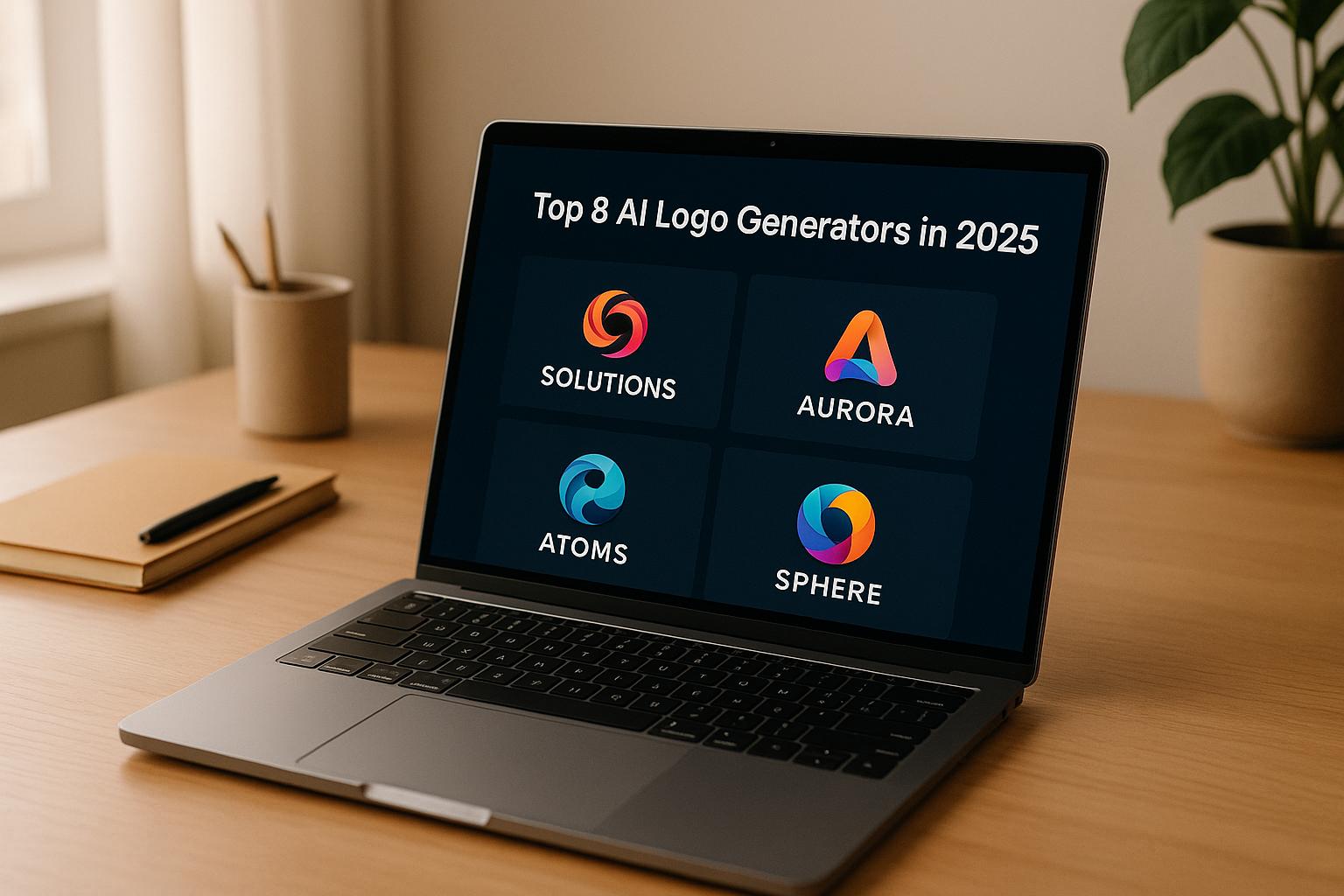MiniMax-01 is an advanced AI model capable of processing 4 million tokens in a single inference - the equivalent of analyzing 3,000 pages of text or 30 books at once. Developed by MiniMax, a Chinese startup, this model is designed for large-scale data handling across text, vision, and multimodal tasks. Its highlights include:
-
Specialized Models:
- MiniMax-Text-01: For text processing.
- MiniMax-VL-01: For vision-language tasks.
- MiniMax Audio: 99% accurate voice cloning.
- AI Video Generator: Creates videos from text or images.
-
Performance Benchmarks:
- 88.5% on MMLU (text tasks).
- 96.4% on DocVQA (vision-language tasks).
-
Affordable Pricing:
- $0.20 per million input tokens.
- $1.10 per million output tokens.
While it excels in handling large datasets and offers cost-effective solutions, its slow inference speed and resource demands on high-end hardware are areas for improvement.
If you need AI for tasks like analyzing massive documents, creating multimedia, or generating detailed insights, MiniMax-01 offers powerful tools with a straightforward pricing model.
MiniMax Audio Review – The Ultimate AI Voice Tool?

Features and Functions
The MiniMax-01 packs impressive capabilities for handling text, vision, and multimodal tasks. With a staggering 456 billion total parameters - 45.9 billion of which are active during inference - it’s built to tackle everything from straightforward document analysis to developing sophisticated AI agents. Below, we’ll dive into its technical design, user interface, and customization options.
Technical Capabilities
At its core, MiniMax-01 is designed for efficiency and precision. It employs a hybrid architecture featuring advanced attention mechanisms, combining Lightning Attention and Softmax attention across 80 layers. The 7:1 ratio of lightning to softmax attention ensures a balance between speed and accuracy, making the model highly efficient in processing complex data.
One standout feature is its massive 4 million token context window, which equates to processing around 3 million words - roughly the length of 30 average books. Developers will appreciate its ability to handle over 60,000 lines of code in a single session, offering unmatched utility for technical tasks.
Performance-wise, MiniMax-01 shines in benchmarks, scoring 88.5% on MMLU, 77.4% on MATH, and 86.9% on HumanEval. Its vision-language counterpart, MiniMax-VL-01, is equally impressive, achieving 96.4% on DocVQA, 83.3% on AI2D, and 91.7% on ChartQA. These results make it a versatile tool for a variety of users - whether it’s businesses processing large datasets, educators analyzing curricula, or content creators working with expansive source material.
What sets MiniMax-01 apart is its optimized design for training and inference. It excels in creating advanced AI agents, supporting capabilities like sustained memory systems for single agents and communication networks for multi-agent setups.
User Interface
While MiniMax-01 boasts technical sophistication, its user interface is refreshingly straightforward. Designed with accessibility in mind, it features a clean layout that even those new to AI can navigate easily. The setup process is minimal - users can log in via WeChat or a mobile number - and the interface revolves around a simple prompt box and a generate button. This design ensures that users can get started without any steep learning curve.
The platform’s intuitive navigation makes accessing its features a breeze. For example, video generation requires only a text prompt, with the system handling all the heavy lifting behind the scenes. Many users have praised the interface for combining ease of use with powerful functionality. Whether you’re accessing it through the MiniMax Open Platform or Hailuo AI, the platform accommodates diverse workflows.
Settings and Configuration
MiniMax-01 offers a range of customization options to suit specific needs. For video generation, users can tweak settings like video length, frame rate, resolution, style intensity, and motion speed. The system supports 720p resolution at 25 frames per second for clips up to 6 seconds long.
Its text-to-speech capabilities, powered by the Model Context Protocol (MCP) server, allow fine-tuning of voice attributes such as ID, speed, volume, pitch, and emotion. Advanced users can also integrate text overlays into videos, controlling elements like text position, animation style, and duration. When crafting prompts, providing clear and detailed instructions - covering the main subject, movement, environment, and lighting - yields the best results.
For enterprise users, the Segmind PixelFlow feature stands out. It enables seamless integration of different AI models, allowing businesses to create custom workflows tailored to their operational needs.
Practical Uses
MiniMax-01 is making waves across various industries by handling massive amounts of data quickly and effectively.
Education
In education, both teachers and students are leveraging MiniMax-01 to create personalized learning experiences and get instant, detailed feedback. It’s a game-changer for bridging the gaps in traditional education systems.
"AI isn't just about efficiency, 85% say AI makes work more enjoyable." (2024 Work Trend Index)
Teachers are finding their workloads more manageable with the help of MiniMax-01. It simplifies lesson planning, generates tailored teaching materials, and automates tasks like drafting emails and organizing schedules. By analyzing large datasets, it also helps educators make smarter decisions about curriculum design and tracking student progress. A 2023 survey revealed that 27% of students regularly use generative AI tools, signaling a clear shift toward technology-driven learning.
The benefits don’t stop at the classroom - MiniMax-01’s capabilities extend seamlessly into the business world.
Business
In the business sector, MiniMax-01 is driving efficiency and enabling smarter decision-making. By analyzing data at lightning speed, it helps streamline processes and improve operations. For example, AI-driven optimizations have boosted operational efficiency by 40%. A standout case is Telefónica O2, which uses AI to handle 400,000 to 500,000 transactions monthly, achieving a three-year ROI of over 650%.
MiniMax-01 also excels at providing real-time insights. Its advanced forecasting tools can cut errors by up to 50%, while its ability to process vast amounts of contextual data allows businesses to analyze market trends, customer feedback, and operational metrics with precision. Its multimodal features are especially impactful for tasks like document analysis and visual inspections. For instance, a semiconductor manufacturer enhanced defect detection accuracy by 90% and slashed quality control labor costs by 50%.
These advancements free up time and resources, allowing professionals to focus on innovation and creativity.
Content Creation
Creative professionals are also tapping into MiniMax-01’s potential. Content creators use it to streamline research, drafting, and multimedia production. According to recent data, 83% of content marketers rely on AI for writing support, and a 2024 global survey found that 42% of marketers use AI tools daily or weekly for content creation.
MiniMax-01’s vision-language model is particularly useful for working with visual content. Whether it’s describing images, interpreting charts, or creating multimedia presentations, the tool simplifies complex tasks. For more technical projects, it assists with market trend analysis, data interpretation, and even code generation, helping creators produce polished, informed, and high-quality work.
sbb-itb-212c9ea
Performance Analysis
Building on its advanced architecture, the performance of MiniMax-01 showcases both impressive strengths and some notable challenges.
What Works Well
MiniMax-01 shines in several areas. Its 4-million-token context window is a standout feature, making it highly effective for long-form tasks. During tests, it achieved a perfect 100% accuracy in a 4-million-token "Needle-In-A-Haystack" retrieval task. This level of precision highlights its capability to handle extensive datasets with ease.
The model's Lightning Attention mechanism is another strong point. It processes sequences of varying lengths with near-linear complexity, ensuring consistent performance as input sizes grow. Benchmarks confirm that MiniMax-Text-01 maintains its efficiency even with longer inputs.
Cost efficiency is another area where the model excels. Its time-to-first-token (TTFT) of just 0.71 seconds provides a responsive experience, particularly valuable for interactive applications. This low latency ensures smoother user interactions without noticeable delays.
However, while these strengths are impressive, there are still areas that need attention.
What Needs Improvement
Inference speed stands out as a key challenge. Tests conducted on 8×Nvidia H20 GPUs showed a generation rate of just 1 token per second. Even on an H100×8 server, processing 2,048 input tokens with 240 output tokens took a lengthy 620 seconds. These figures reveal bottlenecks, especially on high-end hardware.
The model's output speed, measured at 33.3 tokens per second, is also below expectations. This can lead to noticeable delays during high-demand periods. Additionally, leveraging the full 4-million-token context can strain system resources, particularly on less powerful hardware setups.
Another challenge lies in the model's Mixture of Experts (MoE) architecture. While this design offers flexibility, it introduces complexity in managing expert utilization during both training and inference. This can result in inconsistent performance across different tasks, adding to the operational hurdles.
These technical issues align with some of the feedback shared by users.
User Reviews
Despite its challenges, MiniMax-01 has received strong user ratings, reflecting high satisfaction across key performance areas. Users particularly praise its intuitive interface and the quality of its outputs, though delays in inference speed remain a common concern.
| Performance Aspect | User Rating | Key Feedback |
|---|---|---|
| Ease of Use | 4.6/5 | Clean interface with an easy drag-and-drop workflow. |
| Motion Realism | 4.7/5 | Generates natural movements and smooth facial animations. |
| Video Generation Speed | 4.2/5 | Quick for short videos, but HD rendering can experience delays. |
| Model Flexibility | 4.5/5 | Handles diverse prompts effectively, showcasing strong multimodal capabilities. |
These ratings highlight the model's practical strengths, such as its user-friendly design and realistic outputs, while also pointing out the need for improvements in processing speed and resource management.
Pricing and Value
Grasping the cost structure of MiniMax-01 is key to deciding if it aligns with your budget and delivers the right benefits for your needs.
Price Plans
MiniMax-01 follows a token-based pricing model, charging $0.20 per million input tokens and $1.10 per million output tokens. This straightforward approach ensures you only pay for what you use - no subscriptions or hidden fees.
For high-volume tasks, the pricing scales well. For instance, 4 million tokens cost just $5.20, making it a practical choice for large-scale processing needs.
If you're exploring video generation, MiniMax offers its AI Video Maker app with additional pricing options. Weekly premium access is available for around $7.99, while individual credits cost about $1.99. While all purchases are final, refunds for technical issues may be granted at MiniMax's discretion.
For occasional users, there's also a serverless option priced at $0.625 per generation, providing flexibility without requiring ongoing commitments.
These pricing structures give you the tools to weigh MiniMax-01's costs against its potential benefits in practical applications.
Value Assessment
MiniMax-01 combines impressive capabilities with an efficient pricing model, offering solid value for a wide range of use cases. Its 75% Model FLOPS Utilization (MFU) on Nvidia H20 GPUs highlights its efficiency, which translates into lower costs without compromising performance. This is achieved through a smartly designed architecture that minimizes computational demands.
For industries like legal services and research, the benefits are especially clear. Law firms handling lengthy contracts or researchers working with massive datasets can process entire documents in one go, cutting down on API calls and saving time - an essential advantage for heavy users.
Enterprise clients value its ability to retain context across large datasets and appreciate the token-based pricing model, which simplifies budget planning and keeps costs manageable for extensive projects.
That said, the value shifts depending on your needs. If you're working on smaller projects or generating a lot of output-heavy content, the per-token costs can add up quickly. For tasks involving significant text generation, this is worth factoring into your budget.
For users looking for a more cost-effective option, the MiniMax-Text-01 variant offers a blended price of $0.42. It’s an excellent alternative for those who don’t need the full feature set of MiniMax-01.
With its performance capabilities, extensive context window, and flexible pricing, MiniMax-01 is well-suited for organizations and individuals tackling large-scale text processing, in-depth content analysis, and complex reasoning challenges.
Final Verdict: Should You Use MiniMax-01?
MiniMax-01 stands out as a powerful tool for large-scale text processing, thanks to its impressive 4-million-token window and budget-friendly pricing.
It’s particularly well-suited for tasks like legal analysis, evaluating healthcare data, and software development - areas where handling massive documents is essential. These practical applications highlight how MiniMax-01’s architecture is built to tackle a variety of demanding challenges.
With 456 billion total parameters (45.9 billion active per token), it delivers the performance needed for both data-heavy operations and more advanced creative tasks. This combination of scalability and versatility forms the foundation of its appeal.
FAQs
Is MiniMax-01 a cost-effective option for processing large datasets?
MiniMax-01 stands out as a budget-friendly solution for businesses handling large-scale data processing. Its pricing is straightforward: $0.20 per million input tokens and $1.10 per million output tokens, offering an economical way to manage extensive datasets.
Unlike traditional AI systems that often demand hefty spending on development, hardware, and upkeep, MiniMax-01 simplifies the cost structure. This streamlined approach helps businesses cut down on overhead expenses while still accessing advanced AI features. It’s a smart choice for organizations looking to get the most out of their investment without breaking the bank.
What hardware is required to run MiniMax-01, and how does its performance differ on various setups?
To operate MiniMax-01, your server must feature a minimum of 8 H800 or 8 H20 GPUs, each offering 32GB or more of GPU memory, paired with high-performance CPUs.
The system's performance is closely tied to the quality of your hardware. On top-tier setups, MiniMax-01 achieves quicker response times and greater throughput. On the flip side, using lower-spec hardware could lead to slower responses and decreased efficiency. To get the most out of MiniMax-01, make sure your hardware matches or surpasses these recommended specifications.
How can MiniMax-01 be tailored to meet the unique needs of industries like legal services or content creation?
MiniMax-01 is built with a smart and adaptable design, making it suitable for a wide range of industries. In legal services, it shines at handling large volumes of documents. Tasks like contract review and legal research become quicker and more precise. Plus, its ability to summarize complex legal texts saves time without sacrificing accuracy or detail.
When it comes to content creation, MiniMax-01 steps up with tools to produce high-quality multimedia content. For instance, its text-to-video feature turns written prompts into captivating videos - ideal for marketing campaigns, educational materials, or social media posts. This functionality allows users to deliver consistent branding while meeting diverse creative needs.



